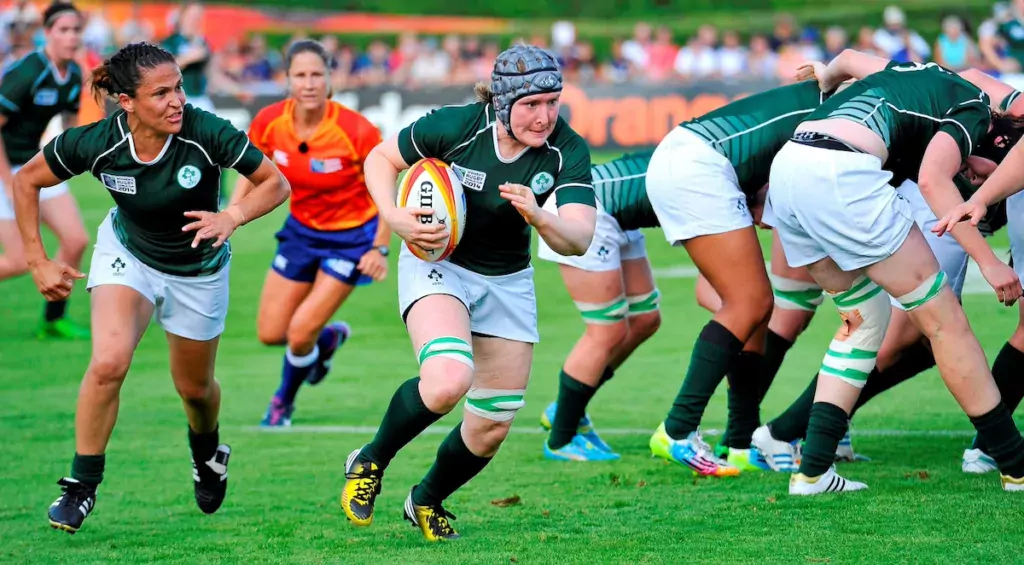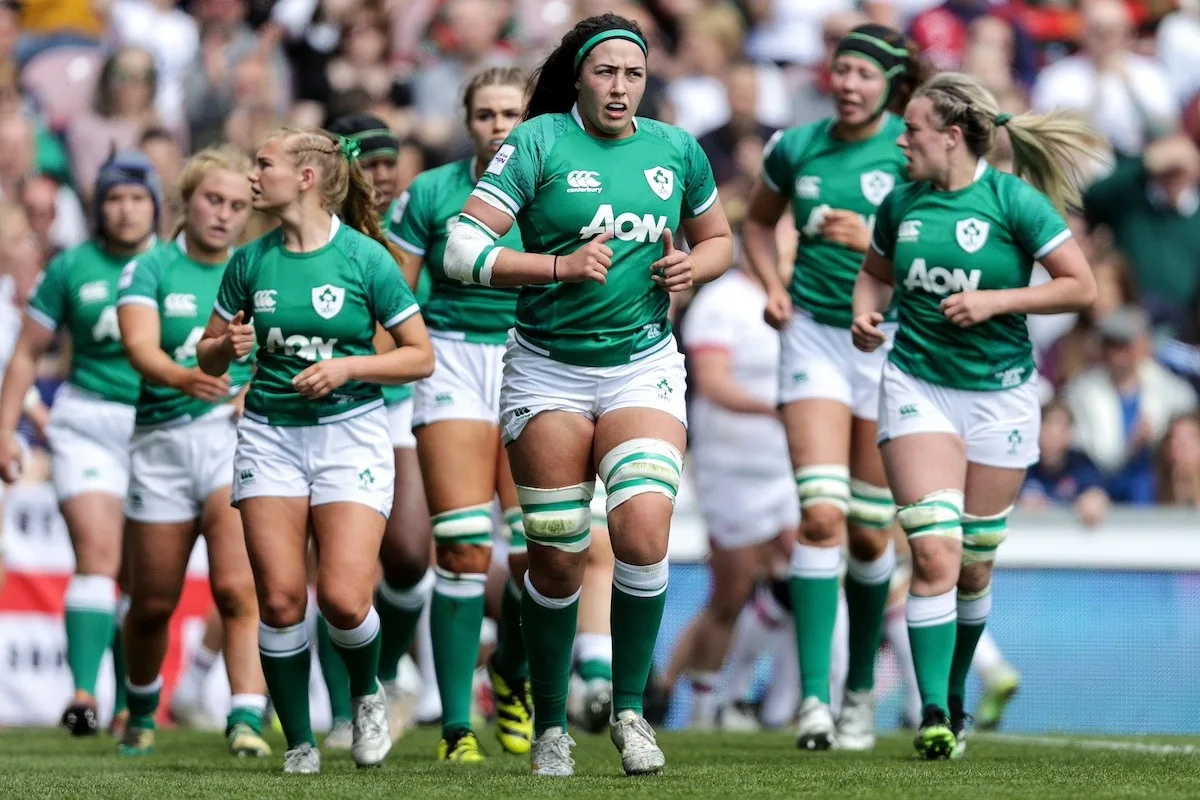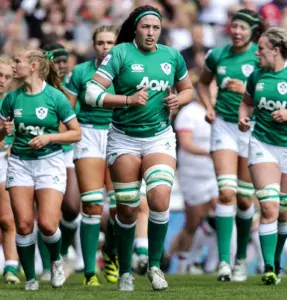Unlocking the Secrets of Rugby’s Dynamic Positions
Rugby, a sport characterized by its intense physicality, teamwork, and strategic gameplay, is often regarded as a collision between brute force and finesse. Within this rugged arena, there are two distinct categories of players – Forwards vs. Backs. But what sets them apart? Is it just their position on the field, or is there more to the story? In this comprehensive exploration, we delve deep into the world of rugby, dissecting the roles, skills, and tactics of forwards and backs. By the end, you’ll not only understand the differences but also appreciate the intricate dance between these two essential components of rugby’s tapestry.
Forward or Back? The Great Divide
Before we dive into the details, let’s begin by drawing a clear line between forwards and backs.
The Forwards
Forwards are the stalwarts of rugby, the engine room of any team. They wear jersey numbers ranging from 1 to 8 and occupy positions closer to the scrum and ruck. These positions include the props, hookers, locks, and the versatile number 8. Forwards are known for their physicality, strength, and ability to win possession for their team through scrums, lineouts, and rucks.
- Props (Jersey Numbers 1 & 3): The props, usually wearing numbers 1 and 3, anchor the scrum. They provide stability and power, ensuring that the scrum remains steady and pushes forward.
- Hooker (Jersey Number 2): The hooker‘s primary responsibility is to throw the ball into the lineout accurately. Additionally, they are crucial in the scrum, as they “hook” the ball with their feet.
- Locks (Jersey Numbers 4 & 5): The locks are the giants of the forward pack, often towering over 6’5″. They play a pivotal role in lineouts, where they are lifted by their teammates to catch the thrown ball.
- Back Row (Jersey Numbers 6, 7, & 8): The back row consists of the blindside flanker (number 6), openside flanker (number 7), and the number 8. They are the link between the forwards and the backs and are involved in various aspects of the game, including tackling, carrying the ball, and securing turnovers.

The Backs
On the other side of the divide, we have the backs, who wear jersey numbers ranging from 9 to 15. They are positioned farther away from the scrum and ruck and are often associated with speed, agility, and creativity. The backs include the halfbacks, midfielders, and the fullback.
- Halfbacks (Jersey Numbers 9 & 10): The halfback duo consists of the scrum-half (number 9) and the fly-half (number 10). They are the playmakers, responsible for distributing the ball, orchestrating attacks, and making crucial tactical decisions.
- Midfielders (Jersey Numbers 11 to 13): The midfielders include the wingers (numbers 11 and 14) and the centers (numbers 12 and 13). They are known for their speed, elusiveness, and ability to break through the opposition’s defense.
- Fullback (Jersey Number 15): The fullback is the last line of defense and often serves as a reliable kicker for clearing the ball or attempting penalty kicks. They also join the attacking line to provide an extra dimension to the backline.
Now that we have a basic understanding of the positions, let’s dive deeper into the nuances that set forwards and backs apart.
The Art of the Scrum: Forwards’ Forte
One of the most distinctive features of rugby is the scrum, a method of restarting play after certain infringements. Forwards play a central role in the scrum, and it’s here that their strength and technique shine.
In a scrum, the eight forwards from each team bind together in a crouched position and engage in a pushing battle to gain possession of the ball. The props, with their powerful legs, provide the initial thrust, while the locks and back row add their weight to the effort. The hooker’s task is to hook the ball back with their feet to ensure it’s available for the scrum-half.
The scrum is a physically demanding aspect of the game, and the forwards’ ability to work in unison is critical. It requires not only raw strength but also perfect timing and technique. If the scrum is won, the backs receive clean and quick ball to launch their attacks. If not, the opposition may steal the ball, gaining a significant advantage.
Lineouts: The Domain of Forwards
Lineouts are another area where forwards play a pivotal role. A lineout occurs when the ball goes out of bounds, and it involves a throw-in by the hooker to players who have lifted a jumper (usually a lock or back row) to catch the ball. The ability to win clean lineout ball is a crucial skill for a team’s success.
Forwards have specific roles in the lineout:
- Jumpers: Typically the locks and back row players, these athletes are lifted by their teammates to contest the ball. Their height and timing are crucial for securing the lineout.
- Lifters: The props and other forwards act as lifters, providing the jumpers with the elevation needed to reach and catch the ball.
- Thrower (Hooker): The hooker is responsible for throwing the ball accurately to their teammates. A well-executed throw can give the team a significant advantage.
Rucks and Mauls: Forwards’ Battlefields
When a player is tackled to the ground, a ruck or maul can develop. These are situations where the forwards’ strength and determination come into play.
- Ruck: In a ruck, the ball is on the ground, and players from both teams compete for possession by attempting to “clear out” their opponents. Forwards excel in this phase, as their physicality allows them to drive their opponents away from the ball, securing it for their team.
- Maul: A maul occurs when a player with the ball is held by one or more opponents, and one or more of the ball carrier’s teammates bind onto them. The forwards in the maul work to drive it forward, creating an opportunity to gain territory.
These phases of play might not be as glamorous as scoring tries, but they are essential for maintaining possession and dictating the tempo of the game. Forwards are the workhorses who ensure the team’s continuity and control in these situations.
Backs: The Architects of Attack
While forwards are engaged in the physical battles at the scrum, lineout, and ruck, the backs are preparing to unleash their creative flair and agility on the opposition. Let’s delve into the unique roles and skills of the backs:
The Halfbacks: 9 and 10
The scrum-half (number 9) and the fly-half (number 10) form the spine of the backline. They are often referred to as the “playmakers” for their crucial roles in decision-making and ball distribution.
- Scrum-Half (Number 9): The scrum-half is the engine of the team. They retrieve the ball from the ruck or scrum and quickly distribute it to the fly-half or other backs. Their quick thinking and accurate passing are vital for initiating attacks.
- Fly-Half (Number 10): The fly-half is the team’s chief tactician. They make decisions on whether to run, pass, or kick based on the situation. The fly-half’s kicking skills are crucial for gaining territory and executing tactical kicks.
The Midfielders: 11 to 13
The wingers (numbers 11 and 14) and centers (numbers 12 and 13) are known for their speed and ability to exploit gaps in the opposition’s defense.
- Wingers (Numbers 11 and 14): Wingers are the sprinters of the team. They are positioned on the edges of the field, ready to capitalize on any defensive lapses. Wingers often score spectacular tries by using their speed to outrun defenders.
- Centers (Numbers 12 and 13): Centers are versatile players who serve as both attackers and defenders. They aim to break through the defensive line, create opportunities for their teammates, and make crucial tackles in defense.
The Fullback: The Last Line of Defense
The fullback (number 15) is the ultimate safety net for the team. They are responsible for covering the entire backfield, catching high kicks, and launching counterattacks. Fullbacks also have a crucial role in clearing the ball from their 22-meter area and kicking for territory.
Team Dynamics: The Forwards and Backs Connection
Now that we’ve explored the distinct roles of forwards and backs, it’s essential to understand how these two groups collaborate to achieve a common goal—winning the game. Rugby is the epitome of teamwork, and the synergy between forwards and backs is crucial.
The Forwards’ Support Role
Forwards lay the foundation for the backs’ success. Their primary objectives include:
- Securing Possession: Forwards work tirelessly to win and maintain possession through scrums, lineouts, and rucks.
- Providing Quick Ball: Once possession is secured, forwards aim to deliver the ball quickly and accurately to the backs, allowing them to exploit defensive weaknesses.
- Protecting the Playmakers: Forwards act as bodyguards for the scrum-half and fly-half, shielding them from aggressive defenders and ensuring they have the time and space to make decisions.
The Backs’ Attacking Prowess
Backs are responsible for turning possession into points. Their roles include:
- Exploiting Space: Backs use their speed and agility to identify and exploit gaps in the opposition’s defense. This often involves intricate passing, sidestepping, and creative running lines.
- Scoring Tries: Backs are the primary try-scorers in rugby. They use their individual skills to evade defenders and cross the try line.
- Kicking for Territory: The fly-half and fullback have the responsibility of gaining territory through tactical kicks, putting the team in a favorable position on the field.
Tactical Differences: Forwards vs. Backs
Rugby is not just about raw power or speed; it’s a game of strategy and tactics. Let’s examine how forwards and backs differ in their approach to the game:
Forwards’ Tactical Focus
- Set Pieces: Forwards are heavily involved in set pieces, such as scrums and lineouts. They focus on the technical aspects of these phases, ensuring they provide a stable platform for the team.
- Physicality: Forwards are the enforcers of the team, using their physicality to dominate the opposition in close-quarter battles.
- Conservation of Possession: Forwards prioritize retaining possession and gaining territorial advantages through physical dominance.
Backs’ Tactical Focus
- Open Play: Backs thrive in open play, where they can showcase their agility and creativity. They aim to break through the defensive line and create try-scoring opportunities.
- Tactical Kicking: The fly-half and fullback use tactical kicking to control the game’s flow, pinning the opposition in their own half or finding gaps in the defense.
- Game Management: Backs often take on the role of game managers, making split-second decisions on when to attack, kick, or pass based on the situation.
Player Versatility: A Blurred Line
While forwards and backs have their specialized roles, rugby is a dynamic sport that sometimes blurs the line between these distinctions. Modern rugby demands versatility from players, and it’s not uncommon to see forwards with the skills of backs and vice versa.
Versatile Forwards
- Mobile Props: Some props possess surprising agility and handling skills, making them effective ball carriers and even passers in open play.
- Flankers as Link Players: Openside and blindside flankers often act as the link between forwards and backs, showcasing their ability to carry, pass, and tackle in various situations.
- Locks with Line-Breaking Skills: Locks with athleticism can make line breaks and offloads, adding an extra dimension to their team’s attack.
Versatile Backs
- Physical Centers: Centers with strong tackling abilities can provide a defensive backbone for the team, effectively doubling as back row players in defensive situations.
- Utility Backs: Some backs are capable of playing multiple positions, offering flexibility in team selection and tactics.
- Fullback as Playmaker: In some cases, the fullback takes on a playmaking role, involving themselves in the attacking line and creating opportunities.
The Evolution of Rugby Positions
Rugby, like any other sport, has evolved over time. The demands placed on players have changed, leading to shifts in the roles and attributes expected from forwards and backs.
Evolution of Forwards
- Increased Mobility: Modern forwards are expected to cover more ground, both in attack and defense. Their fitness levels and agility have become crucial.
- Ball Skills: Forwards now work on improving their handling and passing abilities, allowing them to contribute to open play.
- Versatility: The traditional “grunt work” of forwards is still vital, but they are also expected to play a more dynamic role across the field.
Evolution of Backs
- Defensive Prowess: Backs are no longer just attackers; they are also expected to be solid defenders, making crucial tackles when needed.
- Tactical Kicking: The tactical kicking game of fly-halves and fullbacks has become more refined, with an emphasis on finding space and relieving pressure.
- Physicality: While backs have always been agile, some modern backs have added physicality to their game, making them formidable in contact situations.
Strategies and Tactics
Understanding the roles of forwards and backs is only the tip of the iceberg. Rugby is a game of strategy and tactics, where each player’s role is defined by the team’s game plan. Here, we’ll delve into some common strategies employed by teams to leverage the strengths of both forwards and backs.
Forward-Oriented Strategies
- Crash Ball: In this strategy, the forwards carry the ball into contact repeatedly, seeking to gain territory and draw in defenders. Once the opposition’s defense is compressed, the ball is quickly shifted to the backs, who exploit the space created.
- Pick and Go: Forwards engage in close-quarter pick and go plays, gradually advancing up the field and tiring out the opposing defense. When the opportunity arises, the ball is released to the backs for a breakout play.
- Driving Maul: In lineout situations, forwards form a maul, which is a rolling, controlled drive forward. The aim is to gain territory and suck in defenders, creating openings for the backs to exploit.
Back-Oriented Strategies
- Wide Ball: Teams with fast and agile backs often employ a wide ball strategy. This involves quickly transferring the ball from the scrum-half to the fly-half and out to the backs, stretching the opposition’s defense and creating opportunities on the flanks.
- Kicking Game: Some teams rely on tactical kicking to gain territory and put pressure on the opposition. The fly-half or fullback executes precise kicks into space, with the wingers and fullback chasing to regain possession or force errors.
- Offloading: Skilled backs use offloading techniques to keep the ball alive in contact situations. This fluid style of play involves quick passes and timely offloads to maintain momentum and catch the defense off guard.
The Endless Debate: Forwards vs. Backs?
In the world of rugby, the distinction between forwards and backs is more than just jersey numbers and physical attributes. It defines a player’s role, responsibilities, and contribution to the team’s success. Forwards are the powerhouse of scrums and mauls, while backs are the sprinters and tacticians who orchestrate attacking plays. Yet, the beauty of rugby lies in the symbiotic relationship between these two groups, working in harmony to achieve victory on the field.
As you watch a rugby match, take a moment to appreciate the choreography of the forwards in the scrum and the finesse of the backs in open play. Each player, whether in the trenches or on the wings, plays a vital part in the grand spectacle of rugby, making it a sport that continues to captivate and inspire fans worldwide. So, the next time you witness a thrilling rugby encounter, you’ll have the inside knowledge to appreciate the balletic interplay between the forwards and backs that defines this magnificent sport.
- World Rugby: The official website of World Rugby, the governing body of international rugby union. It provides comprehensive information about the sport, including rules, news, and events.
- BBC Sport – Rugby Union: BBC Sport’s dedicated section for rugby union, offering the latest news, analysis, and live updates on rugby matches from around the world.
- Rugby World Magazine: The website of Rugby World Magazine, a leading publication that covers all aspects of rugby, including player profiles, expert analysis, and in-depth features.

